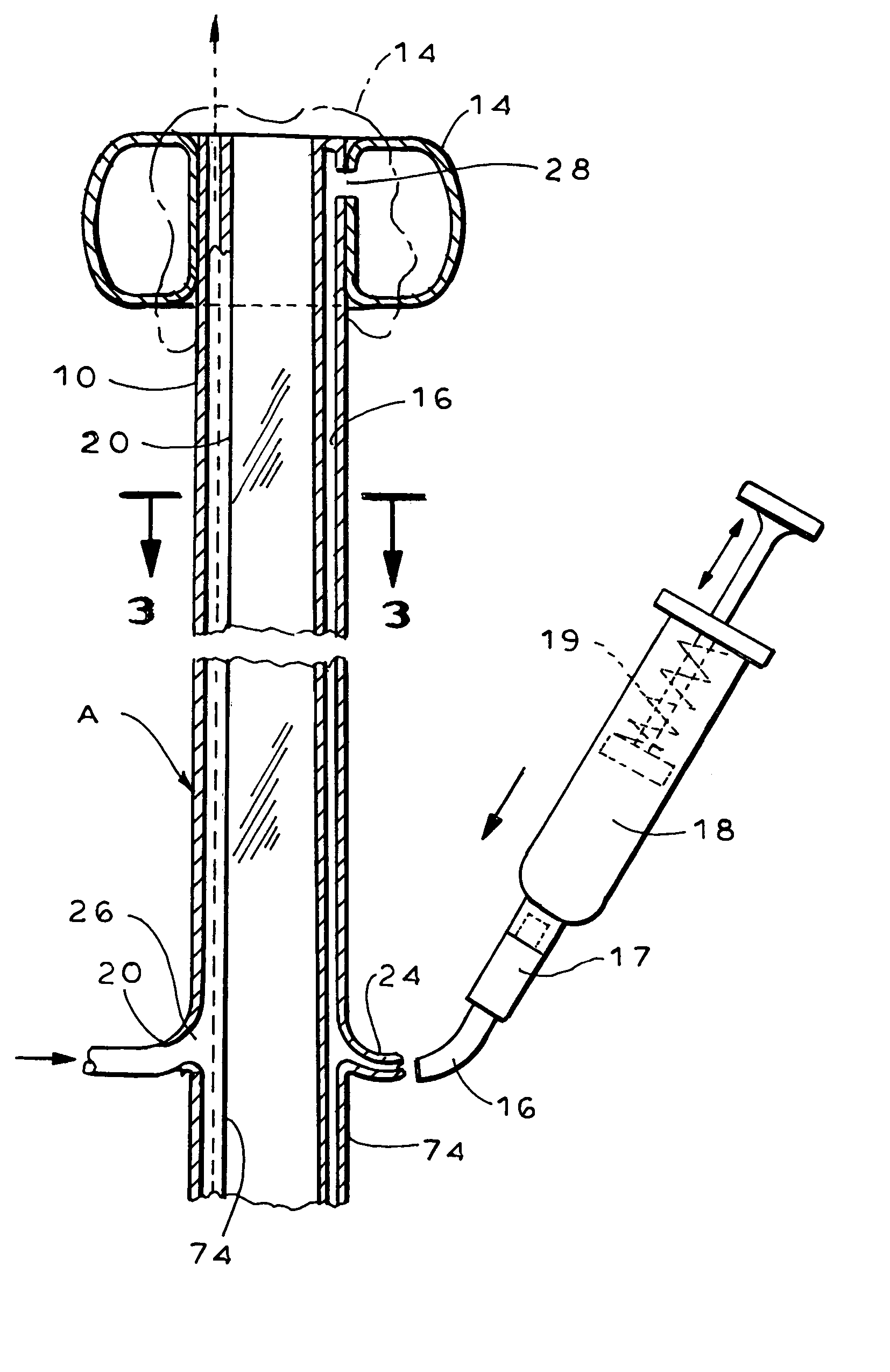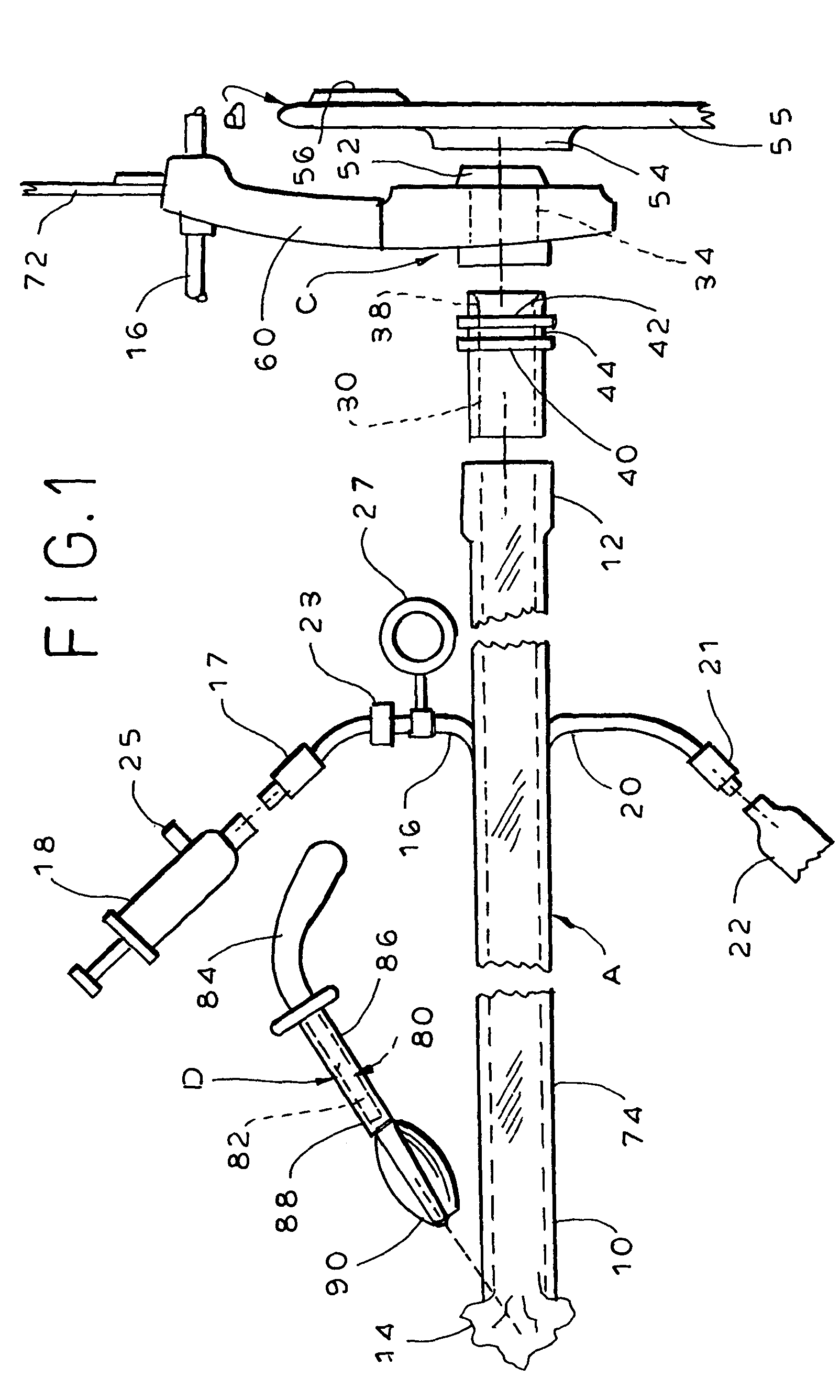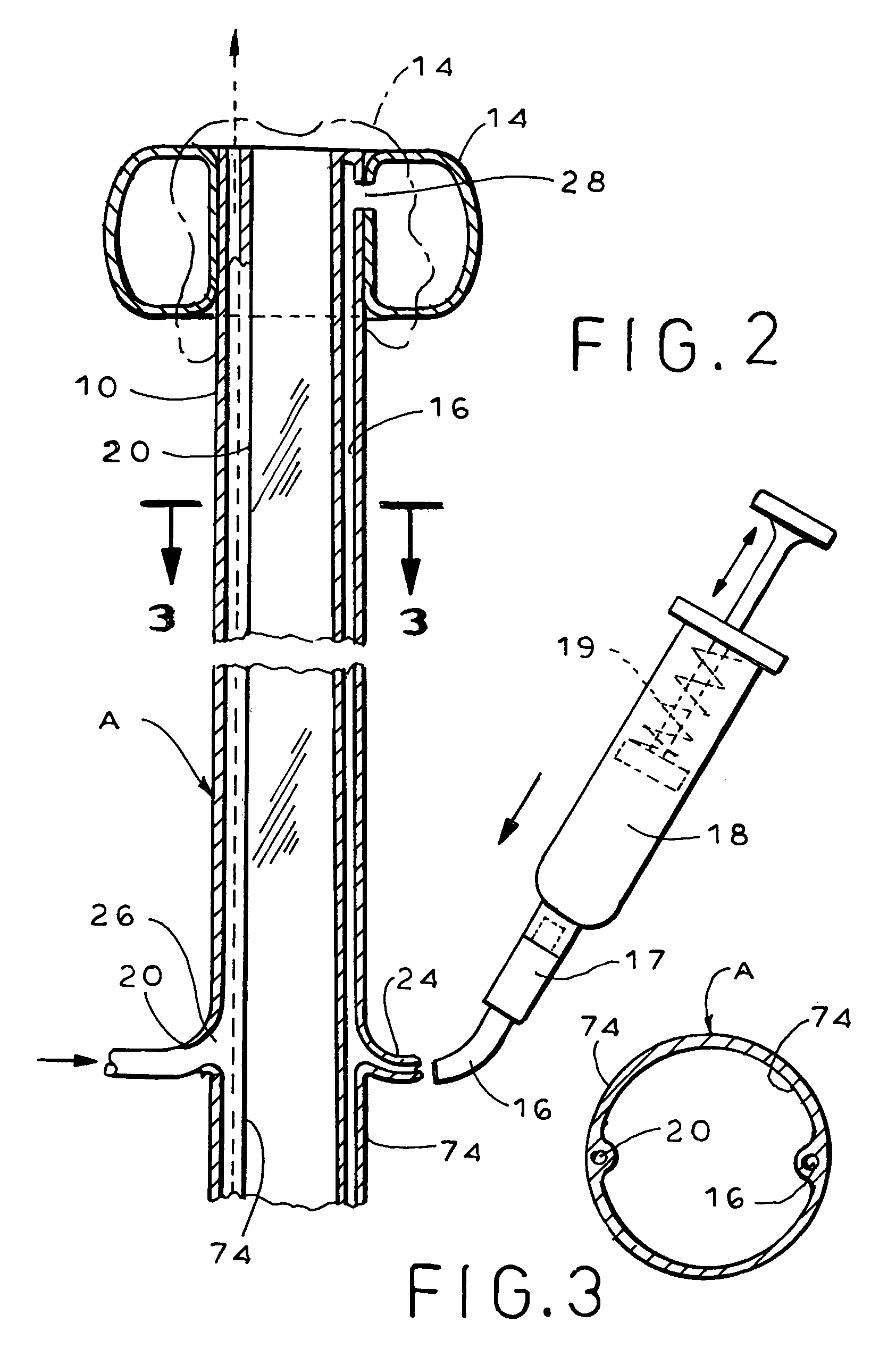Fecal management appliance and method and apparatus for introducing same
a waste management and fecal technology, applied in the field of fecal or waste management appliances, can solve the problems of the pressure exerted by the balloons on the adjacent tissue, during and after, and can be complex and costly, and achieve the effect of preventing excess pressure on the adjacent tissu
- Summary
- Abstract
- Description
- Claims
- Application Information
AI Technical Summary
Benefits of technology
Problems solved by technology
Method used
Image
Examples
Embodiment Construction
[0060]As seen in FIG. 1, the medical appliance of the present invention includes an elongated flexible tubular element, generally designated A, having a distal end 10 that is designed to be introduced into a body cavity, and a proximal end 12. Element A is preferably approximately 1 meter long and 23 mm in diameter. It collapses to 8 mm in diameter to facilitate passage through the anal sphincter.
[0061]A fecal waste receptacle, generally designated B, is rotatably connected to proximal end 12 of element A, through an adapter plate, generally designated C. Affixed to the exterior surface of the distal end 10 of element A is a low-pressure inflatable balloon 14, shown in its deflated state in FIG. 1.
[0062]Balloon 14 is inflated with fluid, such as air, water or saline, through an inflation lumen 16 to a diameter of about 58 mm, with a pressure of less than 52 mm Hg. (1.0 pound per square inch). Lumen 16 is connected by a Luer type valve connector 17 to an inflation fluid source, such ...
PUM
 Login to View More
Login to View More Abstract
Description
Claims
Application Information
 Login to View More
Login to View More - R&D
- Intellectual Property
- Life Sciences
- Materials
- Tech Scout
- Unparalleled Data Quality
- Higher Quality Content
- 60% Fewer Hallucinations
Browse by: Latest US Patents, China's latest patents, Technical Efficacy Thesaurus, Application Domain, Technology Topic, Popular Technical Reports.
© 2025 PatSnap. All rights reserved.Legal|Privacy policy|Modern Slavery Act Transparency Statement|Sitemap|About US| Contact US: help@patsnap.com



